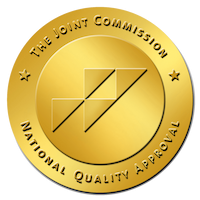Robot-assisted surgery in Augusta, Georgia
The surgeons at Doctors Hospital of Augusta have extensive experience treating patients using minimally invasive robotic surgery and non-invasive radiosurgery. These techniques offer advantages compared to more invasive traditional procedures, such as minimal scarring and faster recovery times.
For more information about the robotic surgeries we offer, call (706) 651-3232.
Recognition

Doctors Hospital of Augusta is certified by The Joint Commission for knee and hip replacements, exemplifying our surgeons' expertise and our use of leading technology in performing these procedures.

What is robotic surgery?
Robot-assisted surgery involves only a few small incisions and gives surgeons more precise control over surgical instruments. This often allows for better patient outcomes compared to what's possible using traditional techniques.
Benefits of robotic surgery
Some of the benefits that robotic surgery offers patients compared to traditional surgery include:
- Earlier release from the hospital
- Faster recovery times
- Less blood loss
- Less pain
- Reduced risk of infection
- Smaller scars
Types of robotic surgery we perform
Our surgeons use robotic surgical technology to perform a variety of specialized procedures, including:
Robotic gynecologic surgery
Our women's care program uses robotic gynecologic surgery when medication and non-invasive procedures fail to effectively treat gynecologic diseases and disorders, such as:
- Cervical and uterine cancers
- Endometriosis
- Menorrhagia or excessive bleeding
- Uterine fibroids
- Uterine prolapse
Types of robotic gynecologic surgeries
Our gynecologic surgeons perform the following robotic surgeries:
- Hysterectomy (the surgical removal of the uterus)
- Myomectomy (the surgical removal of uterine fibroids)
- Sacrocolpopexy (a procedure used to repair the falling or prolapse of any pelvic floor organs, such as the vagina, uterus, bladder or rectum)
Robotic orthopedic surgery
Our orthopedic program offers joint replacements using minimally invasive techniques. Robot-assisted surgery gives orthopedic surgeons a high degree of precision when replacing diseased and injured joints with customized, artificial joints.
Robotic thoracic surgery
The surgeons in our thoracic (chest) and pulmonary (lung) care programs use thoracic surgery to treat many conditions of the chest cavity, including lung cancer and esophagus diseases. Traditional thoracic surgery, also known as thoracotomy, requires making a long incision through the chest wall. When using this approach, there are some cases where the surgeon needs to cut open the breastbone at the front of the ribcage. This is called a sternotomy.
Robot-assisted thoracic surgery is performed with only a few tiny incisions made between the patient’s ribs. This avoids the need for a large incision and the possible need for a sternotomy.
Robotic urologic surgery
Our urologic surgeons use robotic surgery to treat conditions that affect the urinary tract or male reproductive organs, including:
- Bladder and kidney cancer
- Prostate cancer
- Ureteropelvic junction (UPJ) obstruction
- Vesicoureteral reflux
Radiosurgery
Radiosurgery is an advanced form of robotic surgery that uses high-powered X-rays and image-guidance technology to pinpoint small tumors. Through radiosurgery, our surgeons can accurately deliver radiation to moving tumor targets from virtually any angle with unequaled flexibility and precision.
Cancers we treat with radiosurgery
Radiosurgery may be used in cancer care, depending on the size and severity of the tumor. This technique can be used to treat cancers from early to advanced stages. In some cases, radiosurgery is paired with surgery, chemotherapy and conventional radiation therapy.
Benefits of radiosurgery
Radiosurgery is a non-invasive outpatient procedure. Like other types of robotic surgery, radiosurgery offers many potential benefits, including:
- Immediate return to regular activity
- Improved accuracy to help surgeons preserve healthy tissue and organs
- No anesthesia required
- No pain
- No recovery time
